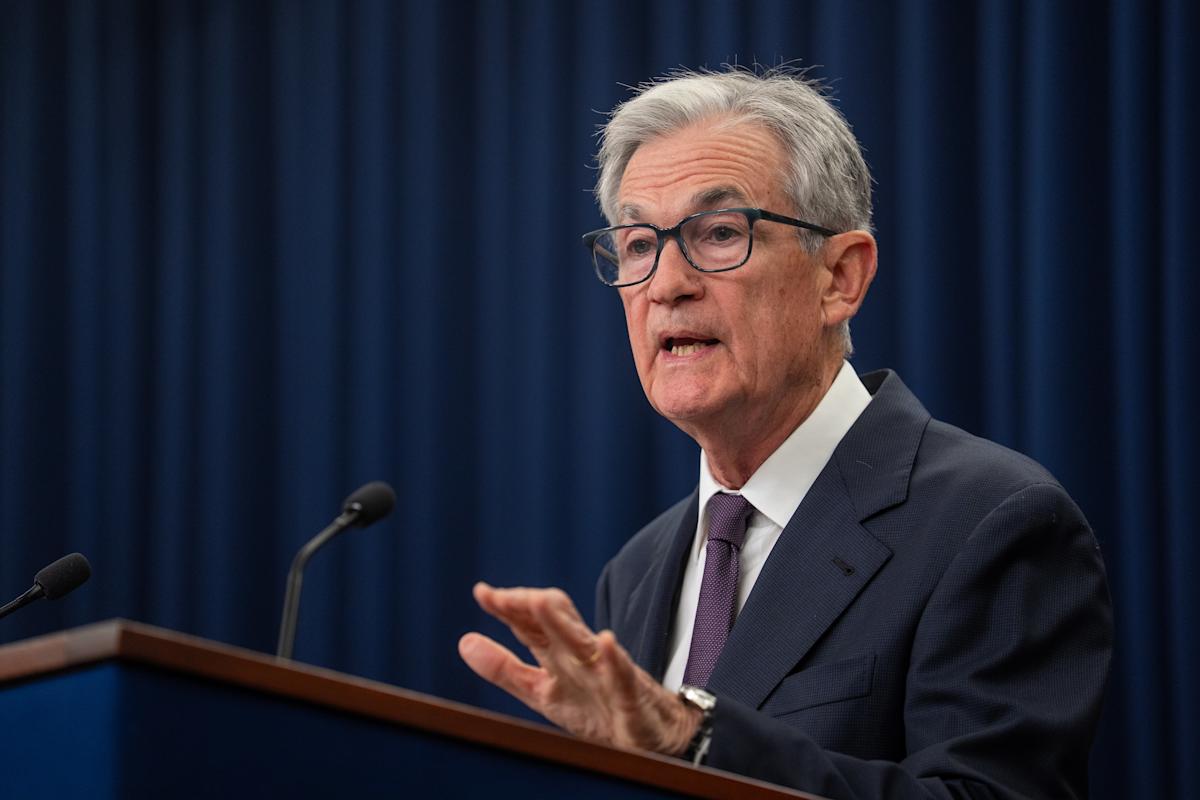Federal Reserve Chair Jerome Powell said Tuesday that the outlook for employment and inflation has not changed much since the central bank’s policy meeting in September. He emphasized, however, that “the downside risks to employment appear to have risen.”
That appears to imply that another rate cut is possible at the Fed’s next meeting on Oct. 28-29, even though Powell did say Tuesday that monetary policy will be set meeting by meeting.
While policymakers on the Fed’s 19-member Federal Open Market Committee have penciled in a median estimate of two more rate cuts for this year, Powell reiterated there is “no risk-free path” as the Fed tries to navigate balancing bringing inflation down with keeping a healthy job market.
“I will stress again that these projections should be understood as representing a range of potential outcomes whose probabilities evolve as new information informs our meeting-by-meeting approach to policymaking,” Powell said in a speech in Philadelphia at the National Association for Business Economics.
Federal Reserve Chair Jerome Powell. (Reuters/Elizabeth Frantz/File Photo) · REUTERS / Reuters
Despite a government shutdown, which has delayed the release of important data such as the jobs report, Powell said that based on the data the Fed does have, “the downside risks to employment appear to have risen” and shifted policymakers’ assessment of the balance of risks.
“While official employment data for September are delayed,” he added, “available evidence suggests that both layoffs and hiring remain low, and that both households’ perceptions of job availability and firms’ perceptions of hiring difficulty continue their downward trajectories.”
Powell noted that private sector data is used more by the Fed as a supplement to official government data – the gold standard – to assess the economy.
Right now, he said he is taking signals from aggregating state level unemployment claims along with payroll processor ADP.
But he stressed it would be easier once the Fed gets official data again, specifically the September jobs report, which he said will be a “very important report.”
If the government shutdown drags on, Powell noted that the Fed will start to miss government data for October that the government would be tabulating, and it could become more “challenging” for the Fed making policy decisions.
On the inflation side, the Fed chair said private-sector data and surveys continue to show that increases in the prices of goods primarily reflect tariffs rather than broader inflationary pressures.
Read more: How jobs, inflation, and the Fed are all related
Story Continues
The Bureau of Labor Statistics will release a government measure of inflation — the Consumer Price Index — on Oct. 24, despite the government shutdown, because the data is required by law to calculate cost-of-living increases for Social Security payments before Nov. 1.
Though that is delayed from the initially slated release date of Oct. 15, the Fed will at least have that data in hand for their policy meeting on Oct. 28-29.
Powell also said in his speech on Tuesday that the Fed may be approaching the point in the coming months where policymakers can stop their balance sheet runoff, or the allowance of bonds to mature and roll off the Fed’s portfolio, thereby decreasing the size of its balance sheet.
The Fed’s long-stated plan is to stop the balance sheet runoff when reserves — funds held by banks’ deposits — at the Fed are somewhat above the level they judge as “ample.”
The exterior of the Marriner S. Eccles Federal Reserve Board building in Washington, D.C. (Reuters/Sarah Silbiger/File Photo) · REUTERS / Reuters
Powell noted some signs have started to emerge that liquidity conditions are gradually tightening, and the committee wants to avoid the kind of strains in money markets experienced in September 2019.
While there were calls to end asset purchases in the immediate aftermath of the pandemic and the Fed did not do so, Powell acknowledged that “with the clarity of hindsight, we could have — and perhaps should have — stopped asset purchases sooner.”
Powell noted that the Fed’s “real-time decisions” were intended to serve as insurance against downside risks, and that during that tumultuous period, the Fed continued purchases in order to avoid a sharp, unwelcome tightening of financial conditions at a time when the economy still appeared to be highly vulnerable.
Powell clarified that the Fed is not going back to the size of the balance sheet before the pandemic because conditions have changed, and the size is set by the public’s demand for the Fed’s liabilities rather than asset purchases.
The Fed’s portfolio is currently overweight on longer-term securities and underweight on shorter-term securities, and the longer-run composition will be a topic of FOMC discussion.
Powell also addressed perceptions that the interest the Fed pays on banks’ deposits held at the central bank is costly to taxpayers.
“That is not the case,” Powell said.
The Senate recently voted down an amendment introduced by Sen. Rand Paul (R-Ky.) that would stop the Fed from paying interest on reserves.
The Fed earns interest income from the Treasury securities that back reserves. Most of the time, interest earnings from Treasury holdings more than cover the interest paid on reserves, generating significant remittances to the Treasury.
By law, the Fed remits all profits to the Treasury after covering expenses. Since 2008, total remittances to the Treasury have exceeded $900 billion.
Click here for in-depth analysis of the latest stock market news and events moving stock prices
Read the latest financial and business news from Yahoo Finance
